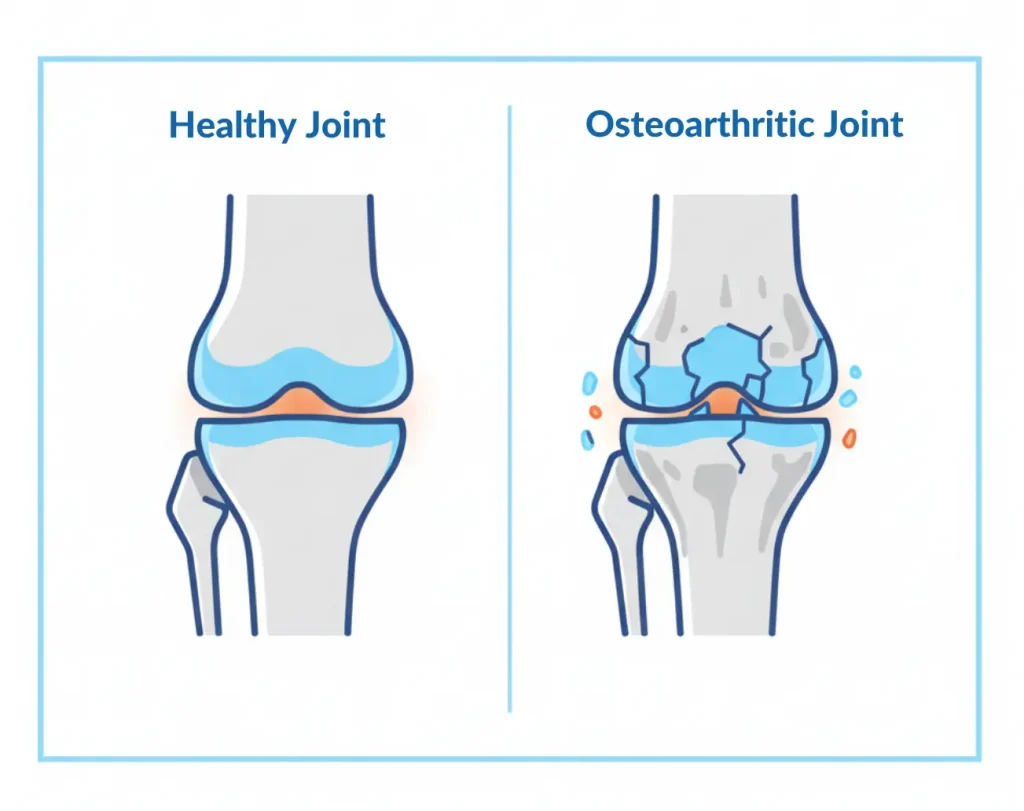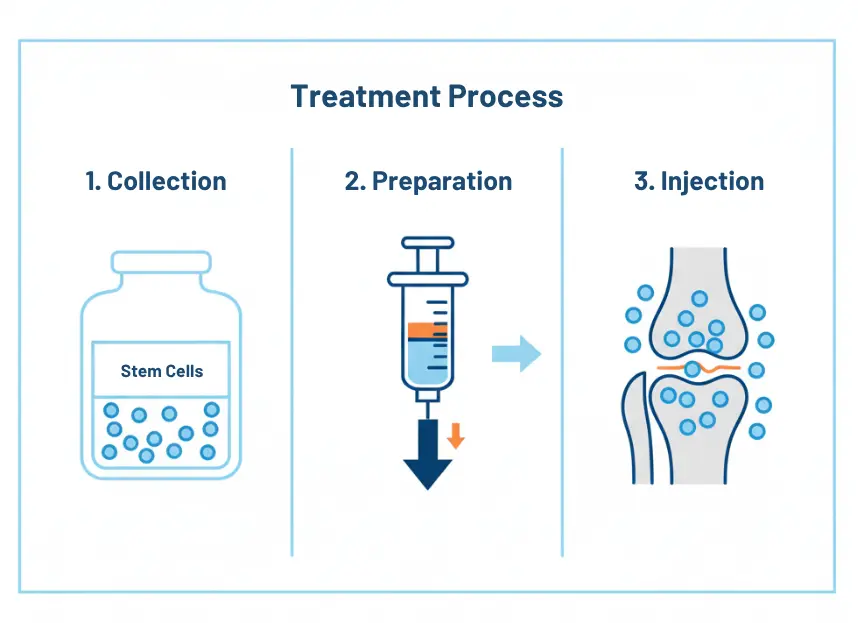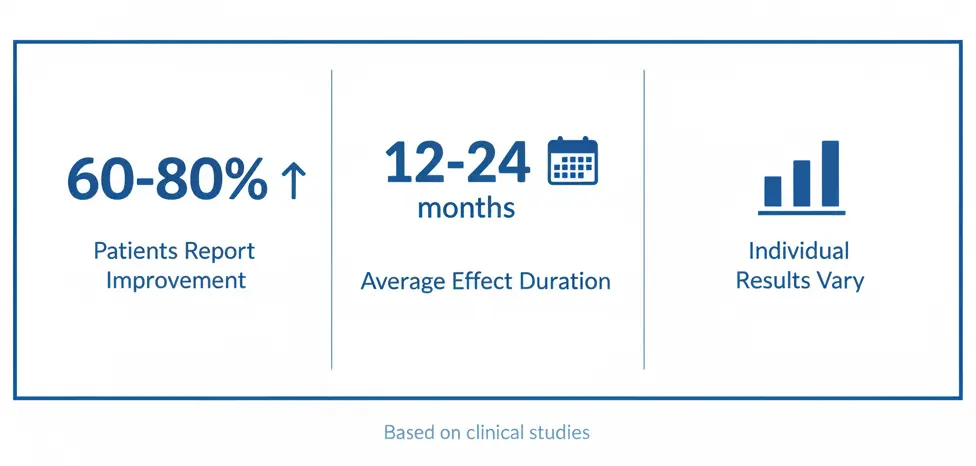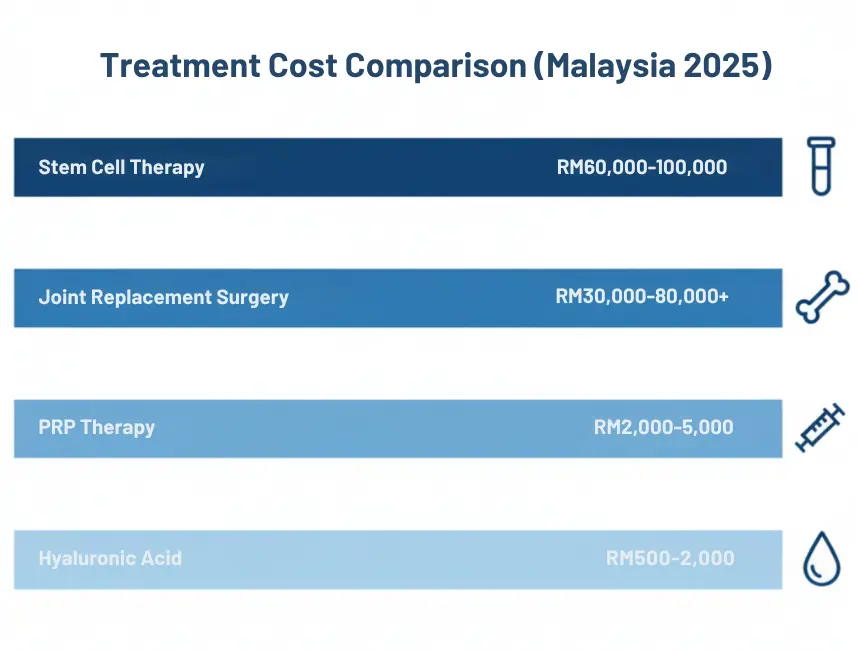Stem Cell Therapy for Osteoarthritis in Malaysia: Cost, Benefits & What to Expect
Estimated Reading Time: 7-8 minutes
Table of Contents
Introduction
Osteoarthritis (OA) is among the most common causes of joint pain and disability, especially in older adults and active individuals. While treatments like medication and physical therapy can relieve symptoms, they do not reverse cartilage damage. In Malaysia, stem cell therapy is emerging as a potential regenerative option—aiming to reduce pain, improve mobility, and possibly delay surgery.
This therapy remains experimental, and results may vary. This guide aims to present a balanced, evidence-based overview of stem cell therapy for OA in Malaysia: how it works, what procedures involve, costs, benefits, and risks.
What is Osteoarthritis?

Osteoarthritis (OA) is the most common form of arthritis, affecting millions worldwide — particularly older adults and active individuals. It is a degenerative condition in which the cartilage that cushions joints breaks down over time, resulting in:
- Pain
- Stiffness
- Swelling
- Limited mobility
The knees, hips, spine, and hands are most commonly affected. According to the World Health Organization (WHO), osteoarthritis affects over 528 million people globally, making it a leading cause of disability.
Because cartilage has very limited regenerative ability, OA tends to worsen gradually. Common risk factors include aging, obesity, joint injuries, and repetitive stress on joints.

Current Treatments & Their Limitations
Doctors usually recommend a combination of conventional approaches to manage OA symptoms:
- Medications (NSAIDs, corticosteroids)
- Physical therapy and muscle-strengthening exercises
- Joint injections (hyaluronic acid, PRP)
- Lifestyle modifications (weight loss, low-impact activity)
- Surgery, such as total joint replacement in severe cases
However, these interventions do not repair cartilage damage. Their limitations include:
- Pain often returns over time
- Long-term medication use has side effects
- Surgery is invasive and costly
- Not all patients are suitable candidates for surgery
This has led to growing interest in regenerative medicine, especially stem cell therapy, as a potential alternative.
What is Stem Cell Therapy for OA?
Stem cells are undifferentiated cells with the ability to develop into different tissue types and support repair. For OA, mesenchymal stem cells (MSCs) are commonly used. These are typically derived from:
- Umbilical cord tissue (Wharton’s Jelly)
- Bone marrow
- Adipose (fat) tissue
When injected into a damaged joint, MSCs may help by:
- Reducing inflammation
- Secreting growth factors that support cartilage repair
- Stimulating chondrocytes, the cells that produce cartilage
- Improving joint environment to slow down degeneration

However, stem cell therapy is still classified as experimental or adjunctive in most countries, including Malaysia. It is not a definitive cure, and outcomes vary.
What Does the Procedure Involve?
Pre-Treatment Assessment
Before receiving stem cell therapy, patients undergo:
- Medical history and joint evaluation
- Imaging (e.g. MRI or X-rays)
- Blood tests and eligibility assessment
- Discussion of risks, benefits, and realistic expectations
Stem Cell Collection and Injection
The procedure varies by source:
- Umbilical cord-derived MSCs: Ready-to-use donor cells (no extraction needed)
- Bone marrow: Extracted from the pelvic bone under local anesthesia
- Fat tissue: Extracted via mini-liposuction from the abdomen or thigh
After collection, cells are processed in a sterile lab and then injected directly into the affected joint, guided by ultrasound or fluoroscopy.
Post-Treatment Recovery
- Rest for 24–48 hours
- Avoid strenuous activity for 2–4 weeks
- Physiotherapy may be recommended
- Effects may take 3–6 months to develop
Clinical Evidence: What the Research Says
Several peer-reviewed studies and clinical trials have investigated stem cell therapy for OA:
- A meta-analysis of 28 RCTs confirmed that MSCs improve pain and function compared to controls [Wiley Library, 2022]
- A large case series involving 329 participants reported improved mobility and reduced pain in patients with knee osteoarthritis [PubMed, 2022]
- Triple-blind RCTs report improved mobility in knee OA [Stem Cell Research, 2025]
- Autologous MSCs (from the patient’s own body) show consistent safety profiles [PubMed, 2021]
However, results are generally better in early to moderate OA, and cartilage regeneration remains limited.

Is It Available in Malaysia?
Yes — stem cell therapy is available in Malaysia, primarily through private regenerative medicine clinics and selected hospitals. It is not offered as standard treatment in most public hospitals.
Legal and Regulatory Framework
Stem cell therapy in Malaysia is regulated under:
- Private Healthcare Facilities and Services Act 1998
- Cell and Gene Therapy Products (CGTP) Guidelines – NPRA
- MOH 2009 Cell Therapy Guidelines
Clinics must comply with licensing, informed consent, and safety protocols. Patients should always verify the clinic’s credentials and the medical team’s qualifications.
How Much Does It Cost in Malaysia?
Stem cell therapy for osteoarthritis in Malaysia typically costs between RM60,000 to RM100,000 (approximately USD 13,000-USD30,000), depending on the treatment plan and facility.
Thanks to supportive regulations by the Ministry of Health Malaysia (MOH) and lower healthcare costs, Malaysia remains one of the region’s more affordable destinations for regenerative treatments.
Cost Factors Include
- Stem cell source: Autologous vs. donor
- Number of sessions or injections
- Facility fees and specialist expertise
- Imaging and post-care services
Insurance coverage is rare, as the treatment is considered investigational or elective.

Benefits, Risks & Limitations
Potential Benefits
While results vary, some commonly reported improvements include:
Short-term (within 3–6 months)
- Reduced joint pain
- Less stiffness, especially in the morning
- Improved mobility and daily function
Mid-term (6–18 months)
- Better joint flexibility and activity levels
- Decreased reliance on pain medications
- Enhanced quality of life
Long-term
- May delay the need for surgery
- Some patients report stable improvement for up to 24 months
- Maintenance sessions may be needed in future
Risks & Side Effects
- Common: mild pain, swelling, or bruising at injection or harvest site
- Rare: infection (<1%) when sterile technique is upheld
- Possible immune reaction if donor (allogeneic) cells are used
- Some patients may not experience measurable benefit
Key Limitations
- Not all patients respond: effectiveness depends on OA stage, patient health, joint alignment
- Cartilage regeneration is not guaranteed
- Long-term safety and efficacy beyond 2 years remain under study
- Lack of standardized dosing, cell type, and administration protocols
- High cost and limited insurance coverage may restrict access
Frequently Asked Questions (FAQ)
Q1: Is stem cell therapy approved in Malaysia?
It is regulated but not yet considered standard of care in Malaysia. Only available in licensed private facilities.
Q2: How long do results last?
Results may last 6 to 24 months depending on the individual and OA severity. Some may require repeat treatments.
Q3: Can it regenerate cartilage?
Evidence suggests partial repair potential, but full regeneration is not yet reliably demonstrated.
Q4: Is the procedure painful?
Most patients tolerate it well with local anesthesia; discomfort is usually mild and temporary.
Q5: Is it covered by insurance?
Usually not, as it is considered experimental. Most patients pay out-of-pocket. Check with your insurer for specific coverage.
Q6: Who is not a good candidate?
Not suitable for:
- Severe joint damage
- Active infections
- Autoimmune or blood disorders
- Cancer patients
- Pregnant or breastfeeding women
- Or patients with unrealistic expectations regarding outcomes.
Q7: How do I choose a reputable clinic?
Look for:
- NPRA-compliant facilities
- Board-certified specialists
- Transparent treatment protocols
- Clear consent procedures
Final Thoughts
Stem cell therapy for osteoarthritis in Malaysia is a promising yet still developing treatment. It may offer relief and delay surgery for patients with early to moderate OA, especially those seeking minimally invasive options. Yet, it is not a guaranteed cure, and outcome variability remains high.
Before making a decision
- Ask about the clinic’s experience and protocols
- Understand costs, limitations, and expected outcomes
- Explore conservative options first, if appropriate
For more information or to schedule a consultation, contact our specialists.
ℹ Disclaimer
This article is for informational purposes only and does not constitute medical advice. Always consult a licensed physician before making healthcare decisions.
Last updated: October 2025

